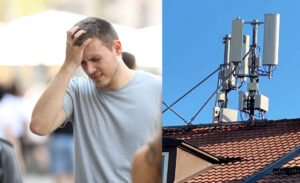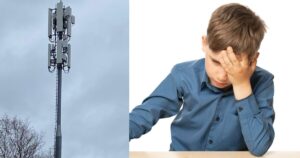Israeli researchers report that young soldiers exposed to radio frequency/microwave radiation are at increased risk of cancer. The researchers believe that there is now sufficient evidence to classify this form of radiation, which is also used in telecommunications, as a human carcinogen, the highest cancer category according to the IARC classification system.
The Israeli researchers have studied reported cases of cancer among 46 young Israeli soldiers who were exposed to radio frequency/microwave radiation in the course of their duties. The median age at diagnosis was only 23 years and those affected had been diagnosed with cancer between the years 2002 and 2021.
The young military personnel had worked as radio or radar operators and had been exposed to very high levels of whole-body radiation, although lower than those allowed by the reference values applied in Sweden. These reference values have been recommended by the much-criticised ICNIRP and only protect against immediate heating effects (within 30 minutes) and do not protect against harmful effects such as cancer, which occur due to prolonged exposure at non-heating levels. The young soldiers had only been exposed for 1-3 years. The latency from exposure to diagnosis was 4.6 years (median).
Lymphoma and leukaemia
The most common types of cancer among military personnel were lymphoma or leukaemia (haematolymphoid cancer). 19 of the 46 cancers belonged to this group.
The results of the researchers’ analysis show that the frequency of lymphoma or leukaemia among military personnel was almost double the expected rate. A significantly increased risk of sarcoma was also observed.
The new findings are in line with previous results published by the same research team in 2018. As now, the researchers examined the cancer risk among military personnel exposed to radiofrequency radiation in the course of their work and found that the incidence of lymphoma and leukaemia was higher than expected.
Should be classified as a human carcinogen
The researchers concluded that the new findings are in line with previous studies. Epidemiological studies have shown an increased risk of leukaemia, lymphoma due to whole-body exposure and brain tumours among mobile phone users. In addition, experimental studies on this form of radiation have strongly suggested a link between exposure and cancer. Based on these and previous findings, the researchers consider that radiofrequency radiation should be considered as a human carcinogen and classified as Group 1, the highest cancer class according to the IARC (International Agency for Research on Cancer of the WHO) classification system.
They further note that the findings add to the growing body of evidence showing that current ICNIRP reference values, which only protect against immediate thermal effects, are seriously inadequate as protection.
Reducing employee exposure to radiofrequency radiation, including the highest peaks of radar pulses, should be mandatory, the researchers say.
The researchers further recommend that radiation protection measures, safety instructions, cancer warnings and exposure measurements, and regular medical check-ups must be introduced for all staff exposed to these risks.
Sources:
https://www.sciencedirect.com/science/article/abs/pii/S0013935122019375?via%3Dihub
https://www.sciencedirect.com/science/article/abs/pii/S0013935118300045?via%3Dihub







